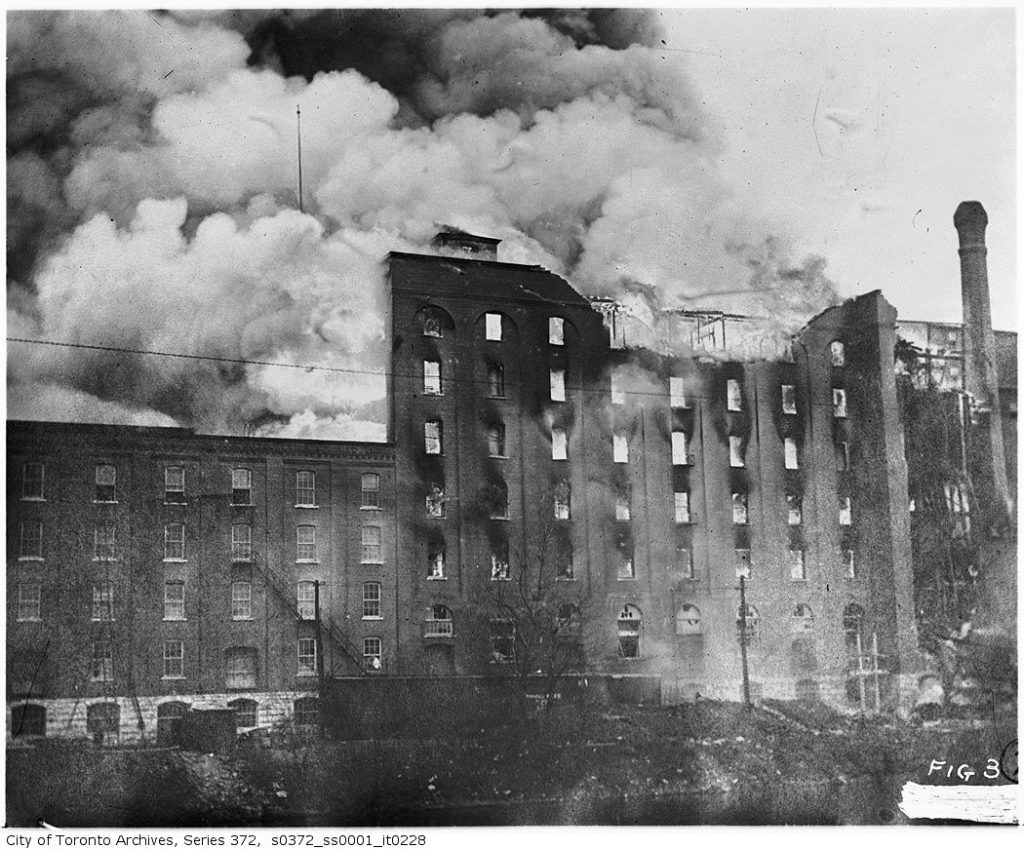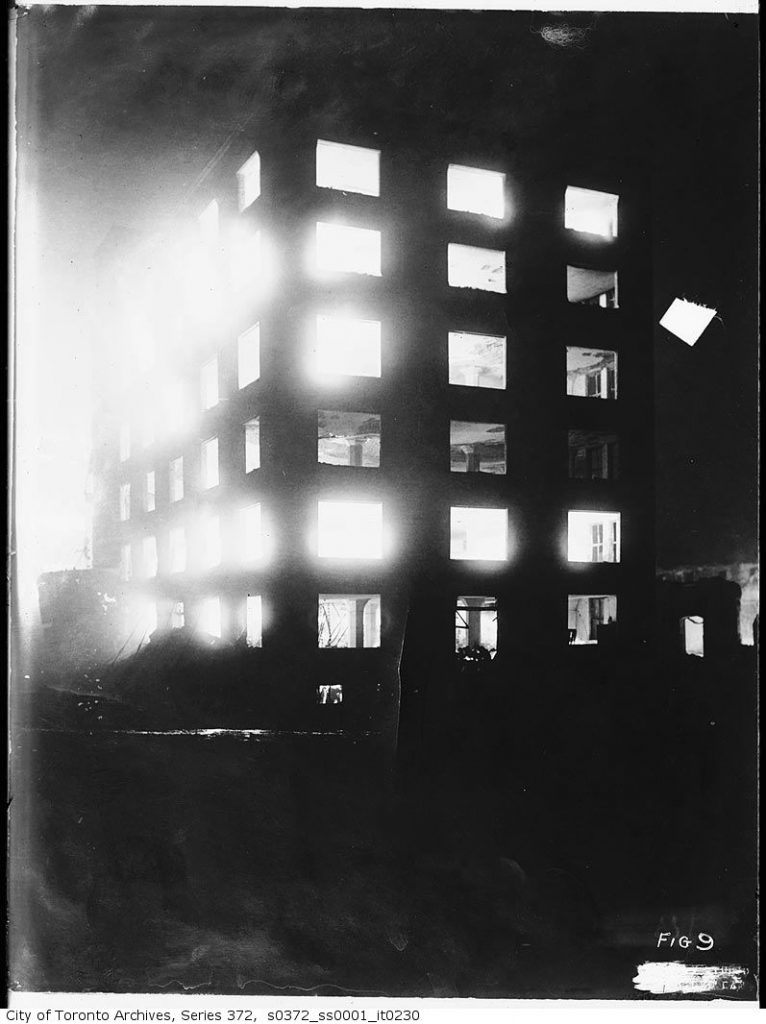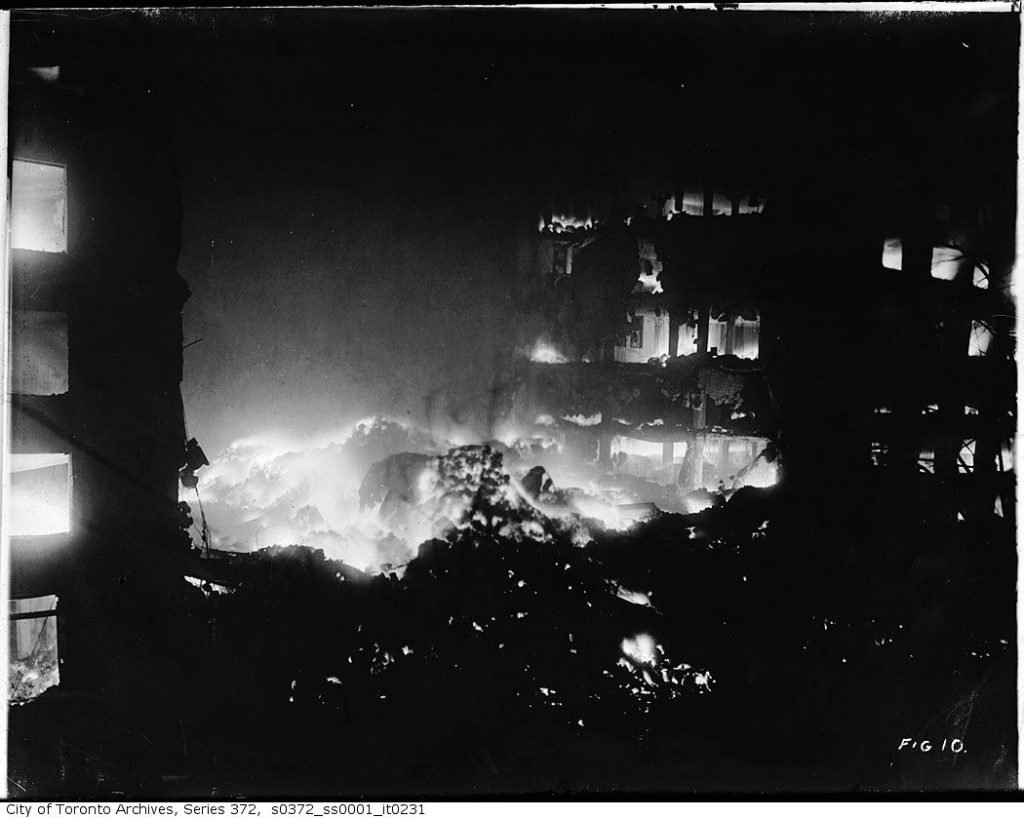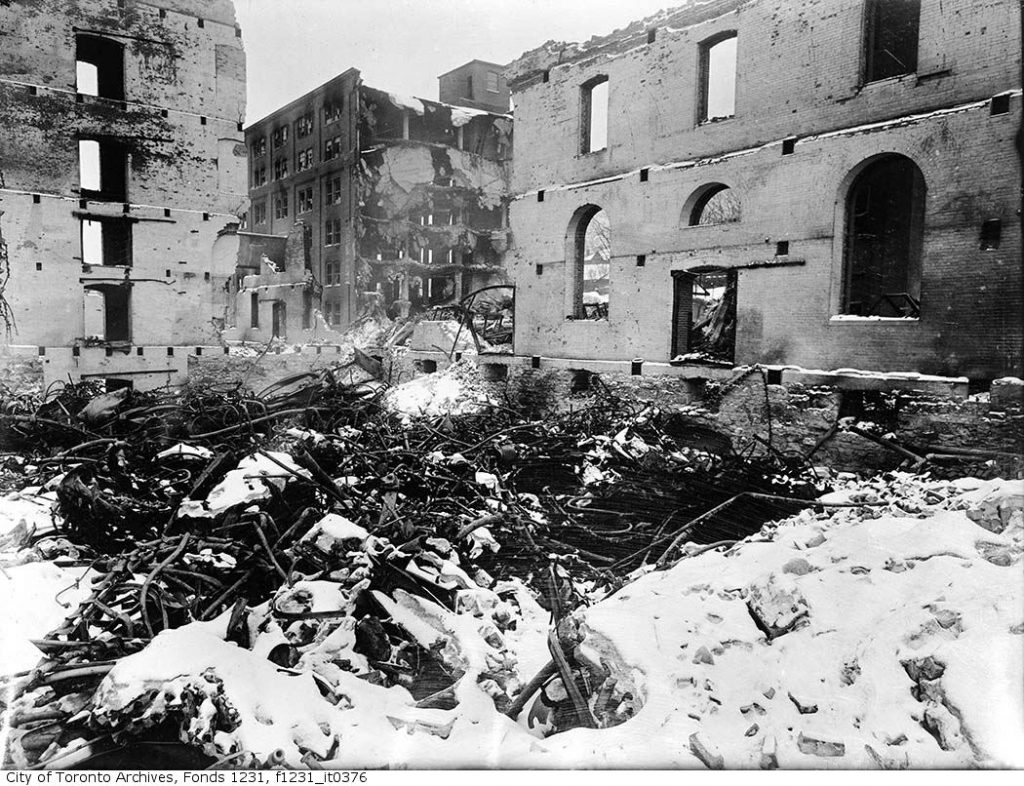Updated September 17, 2024, Authored by Rose Keefe
On Monday, December 11, 1916, hundreds of workers reported for duty at the Quaker Oats plant in Peterborough, Ontario.
Although it was the first day of the work week at the Quaker Oaks Plant, for 24 of these employees, unfortunately it would be the last day of their lives.
The Quaker Oats plant was, and still is, one of Peterborough’s biggest employers, in Peterborough’s history. It opened the plant on the shores of the Otonabee River in the late 1890s, when it was still known as the American Cereal Company.
The facility produced the Quaker brand’s famous instant oats as well as cereal and livestock feed. After World War I broke out in 1914, it received large wartime contracts to produce food for the UK Army and Canadian Expeditionary Forces in France. To meet the increasing demand, the factory was alternating three shifts of employees to meet the high demands in order to feed all the soldiers, turning the factory into a 24-hour operation with overworked employees.
Business was good at the 1916 Quaker Oats Factory however, in a facility that handled tons of grain, prosperity could also be hazardous, and cause an explosion and fire.
The Quaker Oats plant in Peterborough, created higher grain dust concentrations in the air and coated everything with a dangerous layer of dust, as combustible dust. With all employees working at capacity, cleaning was neglected, with tragic results on December 11 1916.
The explosion and fire occurred at around 10:00 a.m. at the 1916 Quaker Oats factory when a spark from one of the grain grinders ignited the grain dust in the air. A workman at Wand’s planning mill across the river later reported that he heard a loud noise and looked across the water, the Quaker plant’s east wall had been blown apart. The cause of the incident and resulting fire was said to have been caused by spontaneous combustion.
An Englishman named Edward Bedding fled from the building looking like, in the words of a reporter, a “human torch.” His clothing was burned off and hair singed down to the scalp. Assistant Engineer Thomas McMahon was thrown from the building when the explosion occurred and another employee, J. Walsh, was hurled so far that he ended up on the riverbank.



The massive explosion and ensuing fire consumed the mill and nearby grain elevator and even spread to a neighbouring courthouse and law library.
“A strong wind was blowing and spread the fire flames along the whole building,” the Ottawa Citizen reported. “The fire raged in all the fury imaginable and the fire department was powerless to stay the flames. (By) noon, the whole building was gone and the elevators to the west were on fire and early this afternoon were gutted.”
Although firefighters were able to save 18 concrete grain elevators at the northern end of the plant, everything else was a total loss.
Property damage was set at $2,250,000 CAD, not including an estimated $225,000 damage to nearby structures.

Source: City of Toronto Archives
The disaster from the 1916 Quaker Oats fire and explosion left 24 people dead and 500 without a livelihood only two weeks before Christmas. Many of the survivors were marked for life, physically and psychologically.
William John Garvey was trapped in a grain elevator after the explosion.
He only survived because his fellow workers dug him out while the structure burned around them. His granddaughter told My Kawartha that his face was badly burned. He died two years later from complications related to his injuries.
Garvey’s son was also affected for life by the fire and explosion. Although he was only 10 at the time, he would refuse to discuss the event and, if asked about it, would walk away or simply say again that he didn’t want to talk about it. It’s safe to assume he wasn’t the only child who would never be able to smell burning food again without thinking of his loss.
Although there were initially fears that the Quaker Oats factory would leave Peterborough and rebuild elsewhere, the company announced its intention to remain in the city. Quaker even gave workers a lump sum payment to sustain them until the new plant opened.
In September 2017, a monument bearing the names of the 24 victims of the Quaker Oats dust explosion was unveiled at Millennium Park in Peterborough.
In September 2017, a monument bearing the names of the 24 victims was unveiled at the north end of Millennium Park in Peterborough, within sight of the Quaker Oats plant. It consists of a statue and a replica of a burned wall.
Bob Orr, secretary-treasurer of the general trade union Unifor, which paid for the monument, told Global News, “It’s unfortunate but even with today’s technologies and all of the advances we have, we are still seeing industrial accidents and disease. That’s what people really have to understand. This is unfortunate people who died in an industrial accident.”
Like any major disaster, the Quaker Oats company plant explosion inspired conspiracy theories, one of which was that German spies set the fire to damage the war effort. The truth is, as Bob Orr pointed out, that it was an industrial accident and, unfortunately, it was not a unique event. Workers continue to die in grain dust fires and explosions every year. Local historian Gord Young wrote a 2016 book called A Dark Day In Peterborough: A Time To Remember December 11, 1916, chronicling the disaster, its aftermath, and the many theories as to what caused the explosion. Over one hundred years ago, the Quaker Oats Plant incident is still being talked about in Peterborough Ontario, and around the world, and that’s a good thing. This tragic incident resulted in a great amount of research on methods of storing this cereal material.
It’s a sad reality that can only be changed by a greater understanding of combustible dust hazards and how to mitigate them.
